Mt Conner
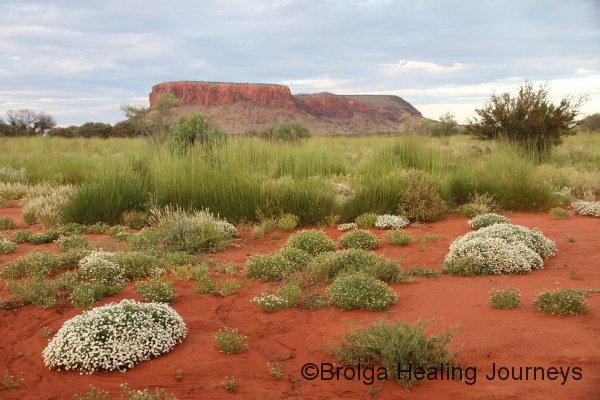
Mt Conner’s main claim to fame is that it is often mistaken for Uluru by first-time visitors to the centre. Located within the Curtin Springs cattle station, it is not open to the public, and thus receives few visitors. Most people content themselves with a long-distance view from the lookout beside the highway, while those in tour buses get even less – possibly a blurry photo out the window as the bus roars along towards Yulara. But Mt Conner is worthy of its own place in the pantheon of famous Australian landmarks.
Mt Conner, or Attila to the Pitjantjatjara people, is located roughly 100 kilometres to the east of Uluru. Unlike the rounded forms of Uluru and Kata Tjuta, Mt Conner has the shape of a mesa, with a flat sandstone capping and rugged, rocky slopes falling away to its base. When seen from the highway, some distance away, its size is not fully appreciated. In fact, Mt Conner is only a few metres shorter than Uluru, but its circumference about three times greater. An impressive place by any measure.
We rarely join organised tours, preferring to visit places by ourselves whenever possible, as this allows us to spend more time soaking up their atmosphere, exploring, and spotting wildlife. But some places, such as Mt Conner and Cave Hill (our next post – stay tuned!), are only accessible to tour groups. In Mt Conner’s case, this is due to its location on a working cattle station.
Faced with the alternative of not visiting Mt Conner at all, we took the obvious option of joining a tour group; one organised by SEIT in Yulara. One good thing about this is that SEIT has exclusive access to M Conner, so we were guaranteed of being the only group there on the day. What we didn’t realise at the time of booking was that, in this non-peak time of year, we were the only people on the tour. So off we headed, Nirbeeja and I, with our tour leader and driver Brett, feeling a little bit like royalty on a private tour!
We would have loved to camp overnight (or longer) near Mt Conner, but currently day visits are the only things on offer.
On the way to Mt Conner Brett explained some of the history of the station. Although relatively recent as a station – it was first established in the 1940s – Curtin Springs was nonetheless the result of those determined, strong pioneering people who, rightly or wrongly, opened up the interior of Australia to white settlement. There was little in the way of infrastructure when the Severin family took over the lease to the property in 1956, so everything you see now at Curtin Springs station and roadhouse is the result of their hard yakka. They are tough, resourceful people.
After a quick pit-stop at the roadhouse, we headed onto the station proper and made our way towards Mt Conner. The countryside was glorious, just as it is throughout the centre this year (and by all accounts, across eastern Australia as well). Flowers and greenery are everywhere, as are trees covered in new growth and pools of water. It is a prosperous time for all.
We stopped at Lake Swanson – a salt lake on the property. North-west of Curtin Springs, and roughly between Uluru and Watarrka (King’s Canyon), is Lake Amadeus, a large salt lake around 100km long, famous for preventing the explorer Ernest Giles from “discovering” Ululru. Well, Lake Swanson is much smaller than that, but still impressive. Edged by pristine white salt, looking for all the world like snow or sand, there was a large body of water across its centre, some of which was coloured pink by the beta-carotene by-product of bacterial activity in its salty waters. The lake is flat and wide, and distances deceptive. Brett asked us to guess the distance from where we stood to the dunes visible on the lake’s far shore. “500 metres”, I said, albeit with little confidence. Nirbeeja went for 750 metres, upping the ante. The answer – 5 kilometres. I guess I lost.
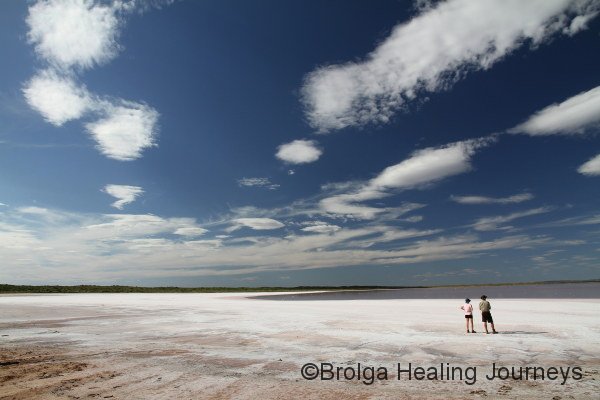
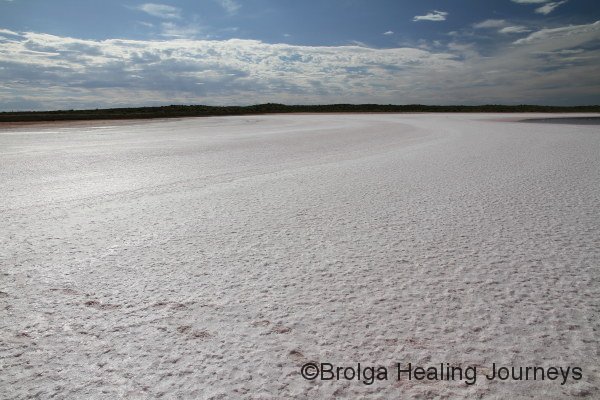
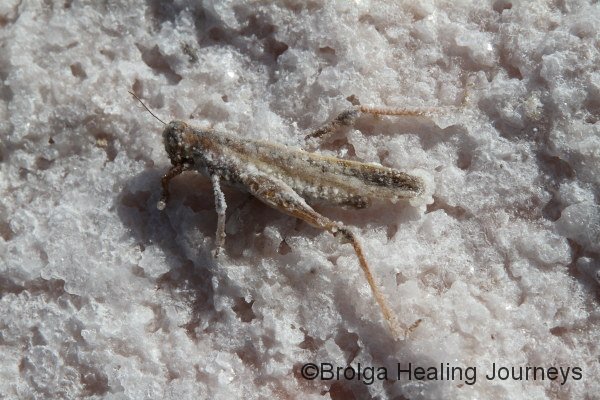
The salty shores were fascinating, containing all number of encrusted little creatures – insects, centipedes and even spinifex hopping mice that had ventured onto the lake in search of water but perished in its highly saline environment. At the Curtin Springs roadhouse there is on display a perfectly preserved Thorny Devil which too perished on the lake. Thorny Devils drink by standing in water and ‘drawing’ water up along narrow channels between their scales to their mouth, a simply amazing evolutionary feature. Unfortunately, standing in the highly salted waters of Lake Swanson had the opposite effect on that poor lizard, either sucking all moisture from its body, or filling it with highly salted water which proved toxic. For any would-be homoeopaths, the shores of Lake Swanson provide a wonderful study in Nat Mur.
Nirbeeja and I couldn’t resist a taste of the salt – and, yes, it was salty and made us thirsty. But of course we had to try it.
Off we headed, driving along pretty good red dirt roads towards Mt Conner. Along the way we encountered a magnificent Desert Oak, standing strong and healthy beside the road. Brett informed us that it has been dated to between 450 and 500 years old. It is known as the Halfway Tree because, not surprisingly, it is halfway between the mountain and the homestead. What stories that patient sentinel could tell. And it looks sturdy enough to double its current age. Unfortunately, its twin once stood on the opposite side of the road, but was cut down for fence posting, a reminder of the impact stations have on the natural environment.
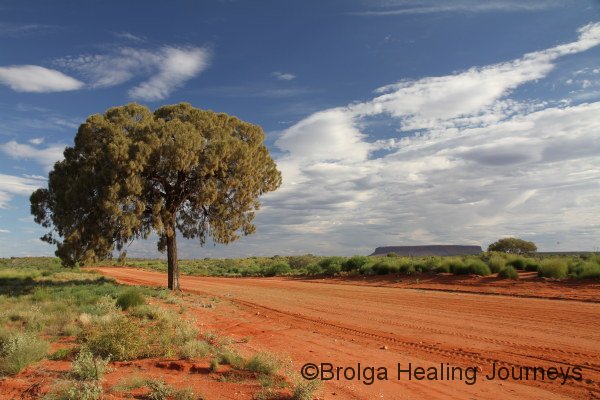
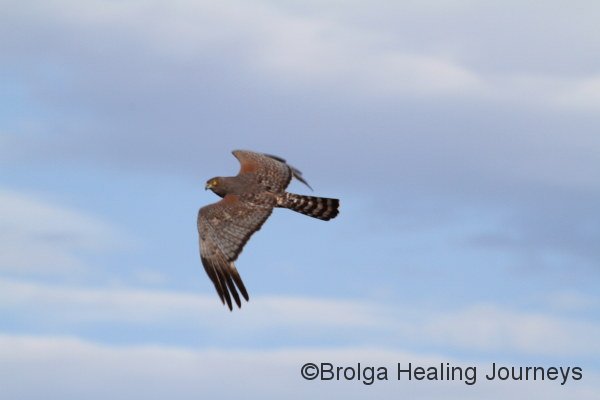
Mt Conner loomed ever closer, its features now becoming apparent. Its rocky slopes were swathed in green, no doubt a rarity in this environment. The northern face, the one visible from the highway, sweeps along for many kilometers in a long gentle curve, but as we rounded the eastern and southern sides we were greeted by deep ravines and gorges; a far more varied and interesting vista. We skirted further around, then drove, or should I say bounced, our way up a track of small boulders to a point near the escarpment of the south western side.
We found ourselves in a place of rare beauty and almost overwhelmed by an atmosphere of total peace. The golden glow of the late afternoon imbued everything with a magical light, the grasses and wildflowers swayed in a gentle breeze, Mulga Parrots frolicked in trees nearby, and we looked across to the magnificent face of Mt Conner, coloured red and gold by the sun, then gazed beyond across the timeless plains.
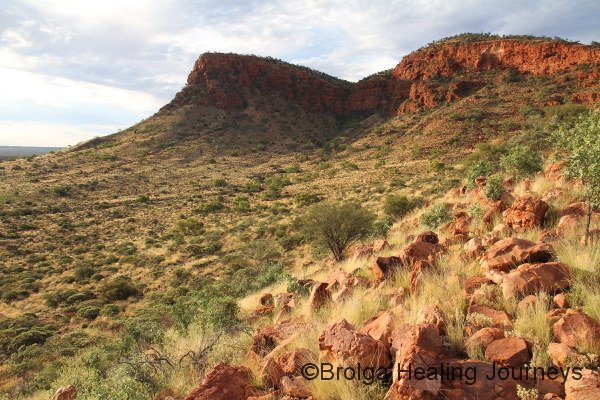
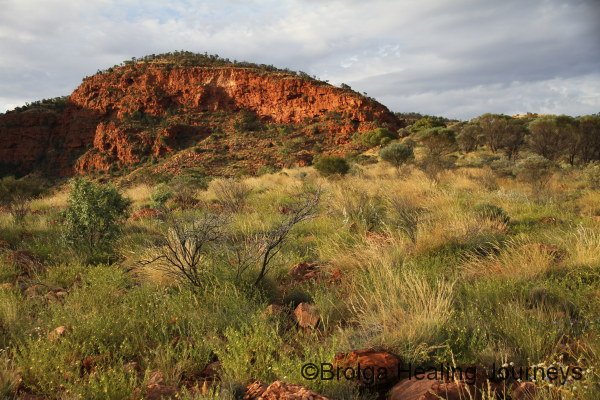
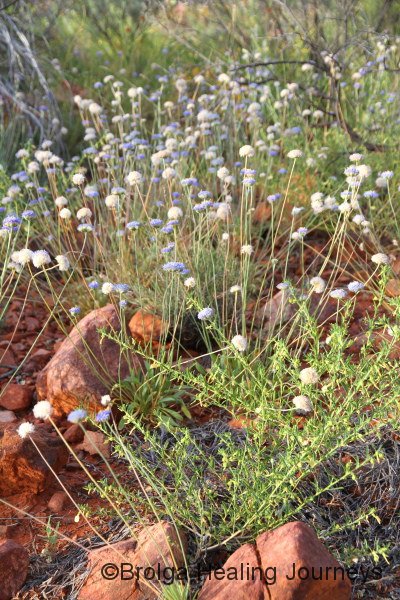
The locals have seen wildflowers on Mt Conner this year that they have never seen before. We expected the country to show the ill effects of cattle grazing, but learned that the cattle shy away from the rocky slopes of Mt Conner, preferring the gentler plains below. The result is a pristine place, largely untarnished by modern man or introduced beast, and we could have stayed forever.
Reluctantly, we left that place to continue our tour. We returned to the plains, themselves beautiful in the fading light, and explored the original dwellings of the Mt Conner Station, the precursor to Curtin Springs. They consisted of the ruins of an underground shelter (think, smaller version of Coober Pedy) built by the Irishman Paddy Deconnley in the 1930s when he took on the original lease, and the more elaborate above ground abode he had assembled for his wife Phyllis, who had come to the station in answer to Paddy’s advertisement in the Melbourne papers seeking a wife. Paddy, it seems, would have been content to live in the underground dwelling, but Phyllis gave him an ultimatum – build me a proper house or face the single life again!
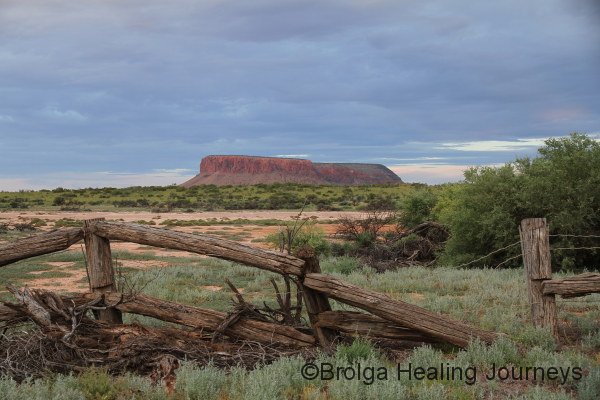
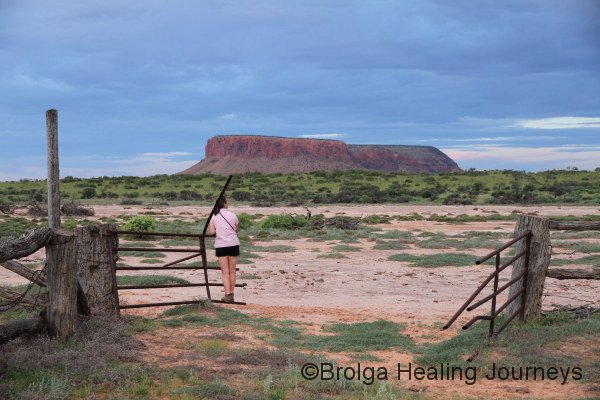
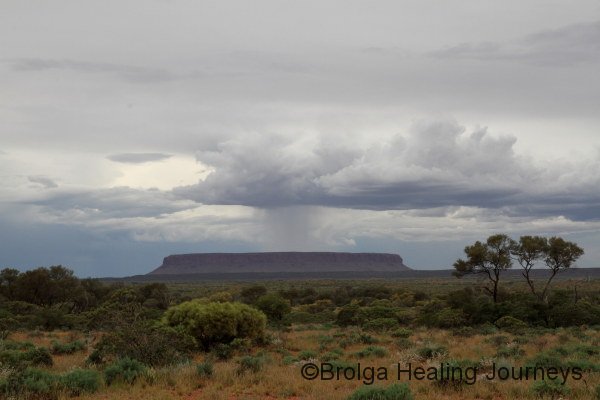
With a glass of champagne, we toasted the sunset view of Mt Conner, each other, and Paddy and Phyllis, then returned to Curtin Springs for a wholesome and satisfying three course meal. Needless to say, we were thankful that Brett was driver for the return trip to Yulara, as we battled to keep our eyelids open after a long, but totally satisfying day.
Peter
1 December 2010
